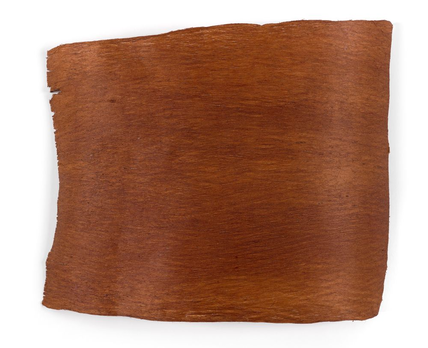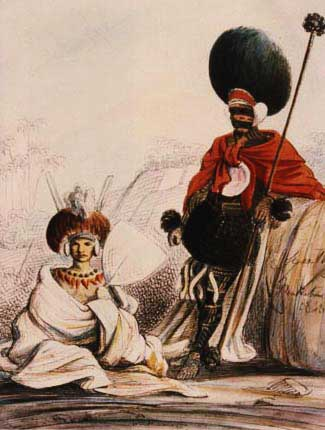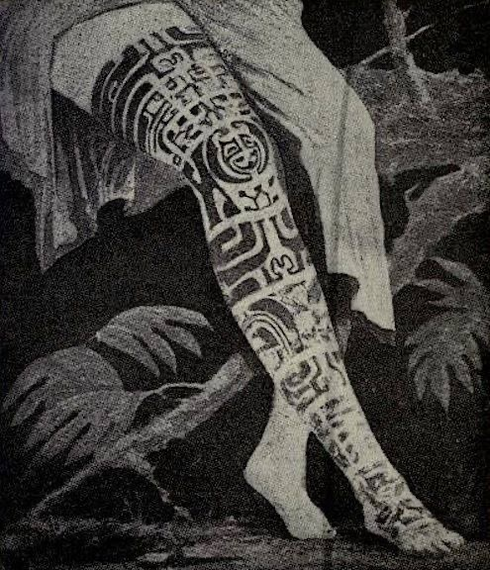Name: Lolo Lin
email:3520560@kabk.nl
The global legacy of colonialism continues to affect the city and where local, national and international histories come together. In the exhibition Colonialism and Rotterdam of Wereld museum. In five different themes and through a series of artifacts, the exhibition provide evidence how does the history of colonialism still have a daily impact in modern life.
This trumpet is made of triton shell and tied and knotted by coconut yarn. The tiny bone figure on the top of the shell was made from thigh bone of a deceased enemy or family member, to preserve their sacred power. The hair is attached to the blow horn as a sign of prestige, in the Marquesas, the hair are considered as the most sacred part of body.
Since the arrival of European in 1521, the islands and their inhabitants were affected for the rest of time by this period of contact and exchange. Smallpox and other new diseases brought by Europeon settlers destroyed the native population. On the other aspect, Marquesas islands was still ruled by the Kana religion during the beginning of the 19th century, the religion was distinguished by elaborate rites, feasts, and ceremonies, and it was based on the worship of ancestral spirits. However, the dominance of the Kana religion began to wane after the French arrived, and Christianity began to take over. Catholicism was brought to the islands by French, and many Marquesas converted to it and adopted its practices. Nowadays, the majority of Maqeusas are Catholic, and the church still has a significant influence on the community life.
During the centuries of colonial history, the Marquesas Islands experienced significant European colonial intervention in their lifestyle, culture, and religion. Fortunately, many cultural heritages have been preserved, showcasing great diversity in various art forms such as wood carving, tattooing, music, and dance. However, just like what postcolonial theories suggest, while many nations have achieved political sovereignty, can we truly say they have attained cultural and intellectual independence? As design students, how should we fight against colonialism and identify various manifestations in our daily lives?
The word tapa (kaku in marquesan)describes beaten bark cloth. They are usualy made by women and have always had an important place in the social life of high polynesian islands.
White tapas are made from the bark of mulberry tree(ute - broussoneta papyrifera) , yellow tapas from bread fruit trees (tumu mei - artocarpus altilis)and brown/red tapas are made from the banyan tree(aoa - ficus prolixa).
White tapa cloth was used by the highly ranked class , whereas the banyan tapa cloth was used mostly by priests. The process consisted of tearing off the bark and then scraping in order to keep only the interior.
After softening in water , the bark is beaten with wooden beaters made from a hard wood such as iron wood(toa - casuarina equisetifolia). The bark is then folded over in a few layers and re-beaten to obtain a good cloth.
Traditionally, the tapa cloths were rarely decorated ; but generally stained with a yellow tint called eka (curcuma longa).Today tapas are used to draw various decorations inspired by motifs used in carving and tattooing.
Tapa production has become one of the specialities of Fatu Hiva.
The Impact of Colonialism on Social Structure
- Disruption of Tribal Systems: European colonization in the 19th century disrupted traditional social structures. Missionaries imposed Christianity, which replaced indigenous beliefs and ceremonies, weakening the authority of chiefs and priests.
- Population Decline: Introduced diseases and cultural suppression led to a significant decline in the Marquesan population, further destabilizing traditional social dynamics.
- Land Ownership Changes: Colonization introduced Western notions of private property, undermining the communal land management system.
- Social Stratification: European influence introduced new forms of hierarchy based on colonial administration, economic roles, and religious conversion.
The social structure of the Marquesas Islands has evolved significantly, influenced by both traditional Polynesian culture and the impact of European colonialism.
The Marquesas Islands have shown remarkable resilience in preserving their art and traditions during and after the colonial period. Despite significant challenges posed by European colonization, the Marquesan people managed to safeguard many aspects of their cultural identity through adaptation, resistance, and revival. Here's how they maintained their art and traditions.
Adaptation and Integration
- Blending Traditions with Christianity: Marquesans incorporated some of their traditional practices into Christian rituals, ensuring the survival of elements of their culture. For example, dances and songs were sometimes adapted to align with church events.
- Secret Practices: Some traditional art forms, such as tattooing, were practiced secretly during periods when they were outlawed by missionaries, preserving knowledge until it could be openly revived.
The Marquesas Islands have maintained their art and traditions through a combination of adaptation, community efforts, and modern revival movements. While colonialism disrupted many aspects of their culture, the Marquesan people’s resilience and commitment to their heritage have ensured the survival and revitalization of their unique identity in the modern world.
- Did the religion dissemination during the colonial period have a lasting impact on the social structure of the Marquesas Islands?
- How do the Marquesas Islands leverage traditional art forms to resist the legacy of colonialism in the modern cultural revival movement
- As a design student/future designer, how do we identify different manifestations of colonialism in our daily lives?
Over 2,000 years ago, when ancient Polynesian civilizations established themselves in the area, music began to take on a new significance in the Marquesas. Songs were used for everything from religious rituals to community celebrations and even for the purpose of passing down family histories. As new instruments and musical techniques were developed, these traditional songs grew more intricate and sophisticated over time.
Marquesan music features a wide range of instruments, such as the pahu drum, toere log, ukulele, and guitar, in addition to these vocal techniques. The richness and complexity of the music is enhanced by the rhythmic and harmonic foundation provided by these instruments. Marquesan music relies heavily on the human voice, but also features a variety of traditional instruments. The pahu, a massive wooden drum struck with sticks, is one of the most significant. With other percussion instruments like the toere (a hollowed-out log struck with sticks), the pahu provides the music’s rhythmic backbone.
Edward W. Said is widely considered to have founded the area of the study called post-colonialism theory, he promoted and established as an area of study in the humanity. His book, which published in 1978, Orientalism, explore the impact of colonialism and western perception of countries that have been colonized. Said explored similar topics in later books such as Culture & imperialism and Covering Islam
Orientalism argues that colonialism was not only a system of political rule, but also an all-round worldview that simply believed the West was superior to the non-western region.
Said believes that the European colonialism was really about taking advantages of colonized peoples labor and their resources, while at the same time claiming that the western colonial power was a savior helping these society to become or modern like Europe. Said wrote that this colonialism thinking did not go away when colonial rule ended in the early twentieth century, but continued in different forms. And colonialism wasn’t just the act of colonizing a particular place, it was an all-encompassing way of understanding the world, which show how academic writing can be deeply connected to the politics, and working with the colonialism to justify the west self-imposed status as a superior culture.
Contemporary Social Structure
- Blended Traditions: Modern Marquesan society retains elements of traditional practices, such as community-focused living and the celebration of cultural heritage, while also integrating aspects of Western governance and lifestyle.
- Village Leadership: Today, local governance operates under French Polynesian jurisdiction, with elected officials and representatives managing villages and communities.
- Cultural Revitalization: There has been a resurgence in traditional practices such as tattooing, dance, and language, reflecting efforts to reclaim and celebrate Marquesan identity.
- Economic Roles: Contemporary economic life involves agriculture, fishing, and tourism, with social roles shifting to accommodate these activities.
- Christian Influence: Christianity remains a dominant cultural force, shaping modern religious and social values.
Oral Tradition and Community Knowledge
- Storytelling and Oral Histories: Marquesan elders continued to pass down myths, genealogies, and cultural knowledge orally, ensuring that younger generations retained a connection to their heritage.
- Apprenticeship Systems: Skills in carving, tattooing, and other traditional crafts were often passed down through informal mentorship within families or communities.
As with other Polynesian tattoo traditions, Marquesan tattooing was used to mark important features connected with status, wealth, and gender, but unlike other islands, the tradition was not restricted to chiefs and their families. Tattoos marked one’s affiliation with any number of groups such as warriors, graded associations, or entertainers called ka’ioi, as well as his genealogical position. Because the tattoo recipient had to pay for the tattoo, wearing a tattoo demonstrated one's wealth, and for men, the ability to withstand pain. For women, tattoos were a sign of beauty, and for men and women they also served other purposes such as protection against evil and the marking of important events, and receiving a tattoo was a rite of passage for young men and women. Tattoos ultimately represented both individual and group identity, and allowed for the participation in important social and religious rituals
Tattoo tools were similar to those on other Pacific islands, and included the primary tools, made out of wood, with sharpened bone combs of different widths protruding from the end.
Marquesan tattoo are highly structured, and conveying deeply layered sets of meanings as well as reflections of ones’ socio-economic status it is said that no two compositions within this aesthetic are exactly alike. With the application tools broadly similar to those used across the region, Marquesas is held to have significantly impacted western tattooing alongside the art forms popularization















